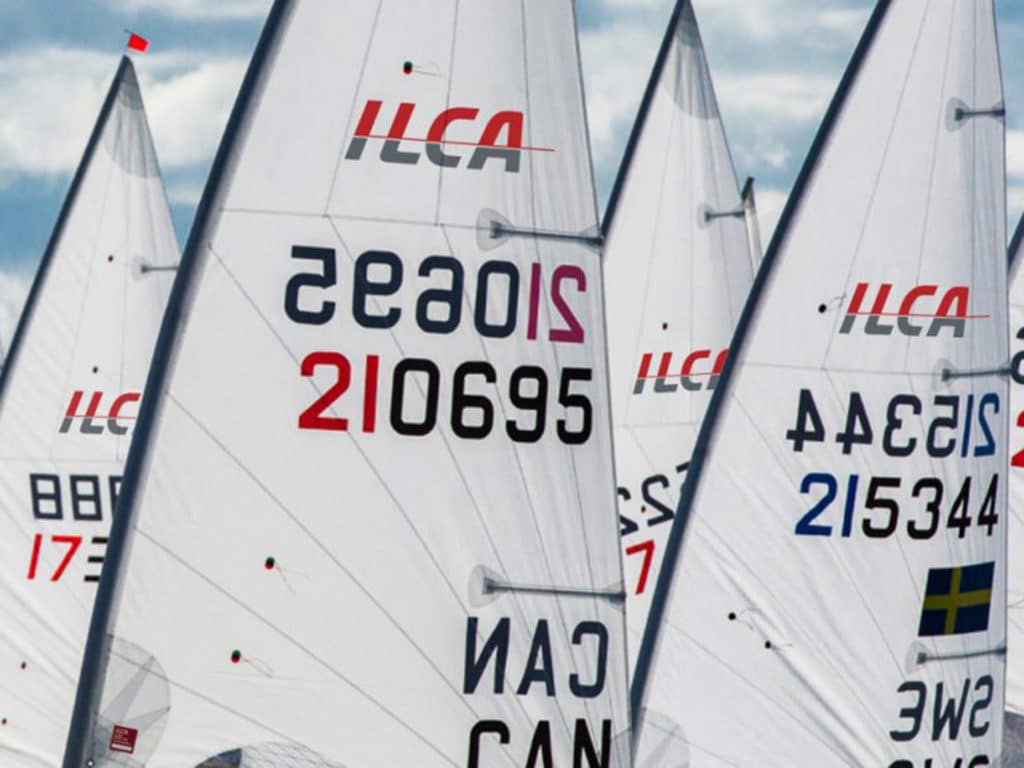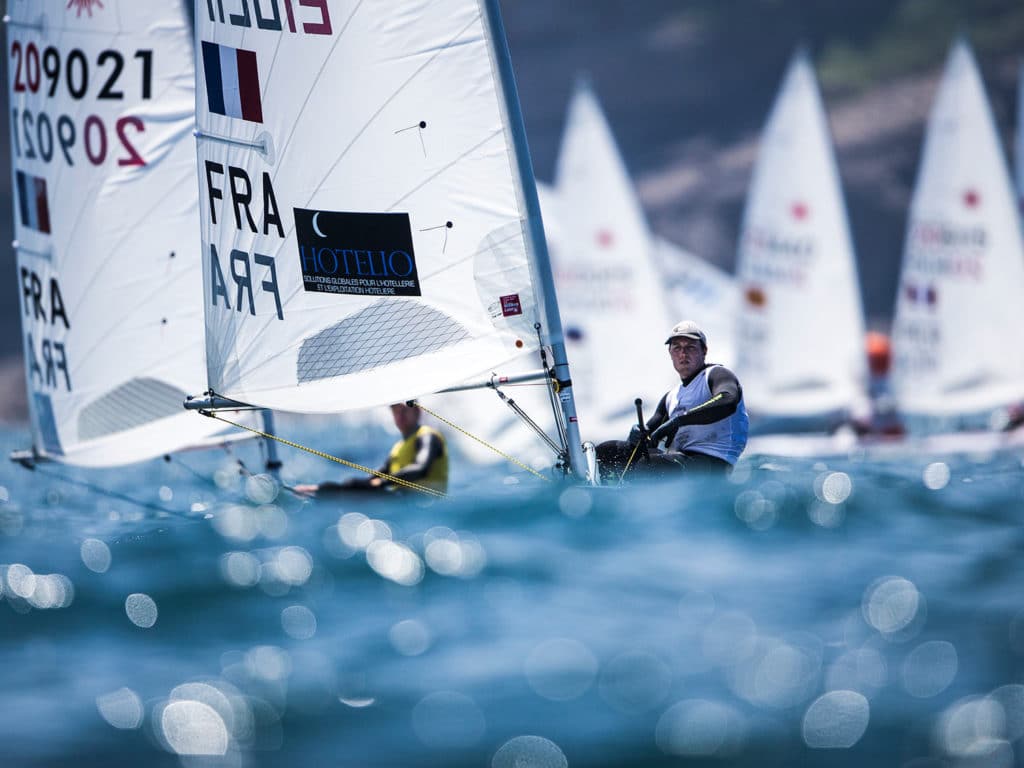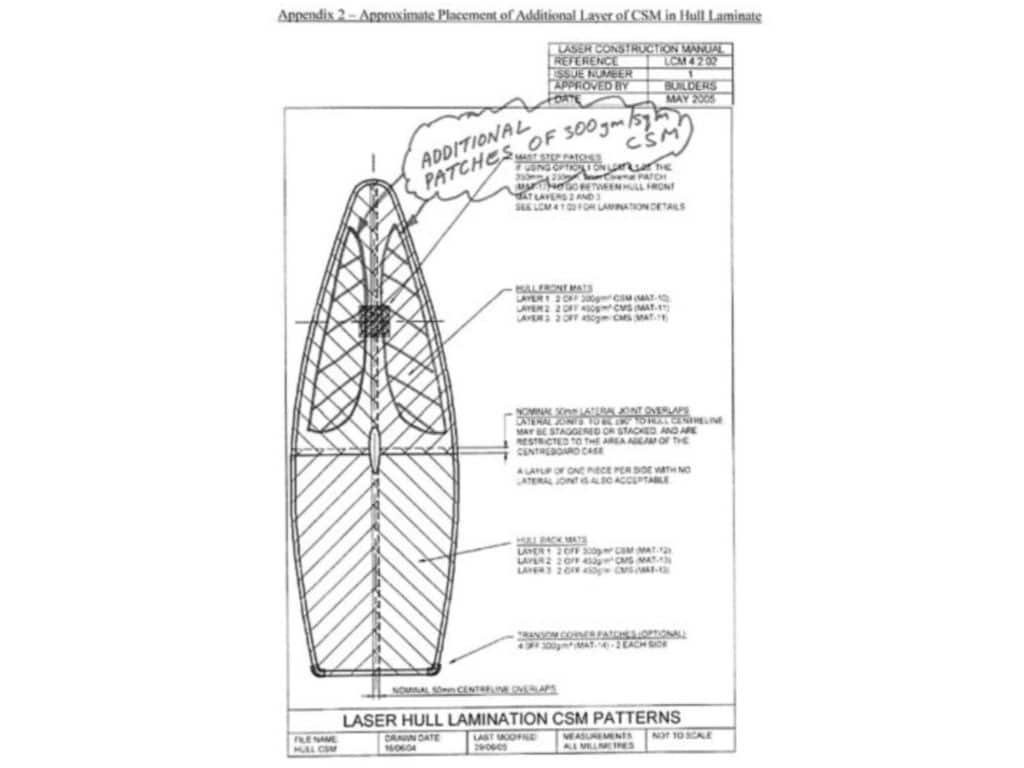
The International Laser Class Association issued a statement on April 25 announcing it would brand each new, class-approved boat as a “ILCA Dinghy.” The association’s action was another offensive in its effort to terminate its European builder, LaserPerformance. With another twist in the Laser’s modern storyline, the fate of the world’s most popular singlehander uncertain for certain.
According to Eric Faust, the association’s Executive Secretary, ILCA is strictly an acronym for the class. “We’ve used that for a number of years,” Faust says, “so it made sense to use it as the brand for the boat.”
Not so fast, says Laser Performance CEO, Bahman Kia, whose company owns the Laser trademark. “Changing the name requires changing the [ILCA’s] constitution, which requires that two-thirds of the membership vote for it,” Kia says.
However, it is unclear whether a membership vote, which is clearly specified for a rule change, is also required for a constitutional change. ILCA’s membership has yet to have its say, but Faust says the issue “will be addressed.” If a vote is deemed necessary, it’s unclear what the membership would be voting on, since the name change has already been announced and implemented.
Another consideration is that the name ILCA Dinghy strongly suggests “International Laser Class Association,” as the acronym has for more than 40 years. LP’s lawyers might take issue with the inference of “L” in ILCA, but according to Faust, who admits he’s learned much about trademarks in the past few months, the association’s usage falls into a different class of trademark than that owned by LaserPerformance.
“The examiners [of trademarks] would say, ‘OK, here’s this word, Laser.’ Then they’d look at the other word, ILCA, and conclude it doesn’t sound or look the same,” Faust reasons.
The specifics of the new name may be the least of the class’s concerns. While the rebranding might be a tempest in a teapot to the general sailing public, it does have ramifications for the wide range of Laser owners, from recreational sailors to Olympic contenders—assuming the Laser remains equipment of choice for the Olympics after the 2020 Tokyo Games.

For those at the top of the sport, the question is whether the Laser or the ILCA Dinghy will be used at the Tokyo Games. The equipment chosen for the Games is the one-person dinghy, says Faust. “They don’t name a brand as an event—it’s not the ‘Laser Event’ at the Olympics, so there’s a distinction between the class and the brand. That’s the way World Sailing sees it, based on discussions with their legal counsel.”
Laser Performance Japan, a class-approved builder, will provide boats for the 2020 Olympics.
World Sailing conducted equipment selection trials for the 2024 Olympic singlehanded dinghy in March, which included the Laser and Laser Radial, but not the ILCA Dinghy, which was not submitted. If selected as the singlehander for 2024, would boats built by Laser Performance be used rather than boats built by other ILCA-approved builders? Again, Faust says, don’t confuse the brand name with the boat.
“The boat is the boat, and the class is the class. The boat can be re-selected as Olympic equipment even though it’s now sold under a different brand name.”
Further muddying the waters for every-day dinghy sailors, LaserPerformance recently marketed its Laser Club Edition, which is said to be nearly 20-percent less expensive than what is now called the ILCA Dinghy and built by Laser Performance Australia ($6,450 versus $7,910, depending on exchange rates). Kia claims the Club Edition and the Laser are identical, with the exception of the absence of a World Sailing plaque. Faust reserves judgment, however, stating that LaserPerformance boats have not been inspected lately to validate class tolerances.
ILCA Dinghy class language has made clear that LP’s Club Edition boats are not class legal, and ineligible to race in any event listed on the ILCA calendar. Owners of LP-built boats would be subject to disqualification. It’s unlikely Corinthian competitors and regatta organizers would inspect for World Sailing plaques at such events, but it is feasible a sailor could be told to pack up and leave. Any sailor winning a major ILCA championship regatta with an LP-built boat, might find themselves in the protest room.
At the club-racing level, however, ILCA’s stance is soft, leaving plaque-policing to local clubs and race organizers. It’s not new territory for the association either. Inexpensive, non-compliant sails are readily available and widely used. These sails, unbuttoned and missing the iconic starburst, often sell for roughly $150. A class-legal sail fetches more than $600, a price Faust says will likely come down as a result of ILCA’s rebranding. For casual racers—which make up a large portion of the class membership—knock-off sails allow them to race and train without investing a significant amount of money in sails.
Will the same free pass be granted to Laser Performance’s Club Edition? Perhaps. Kia states the Club Edition is the exact same boat as an off-the-shelf Laser. “We’re not building anything new,” Kia says. “We are advertising it as a training boat because only a small percentage of our market are racers at world events. The majority of our market just want to sail.”

While it seeks to terminate LP as a class builder (see timeline, below), ILCA is sourcing new builders to support those already in Australia and Japan. There have been four or five inquiries in North America from qualified builders, says Faust. “We’re excited to see what we can do when we have a strong builder/dealer network.”
Of particular interest are Africa and Asia, as well as “invigorating areas such as North and South America,” which Faust says have been struggling with supply issues with LaserPerformance.
Kia’s concern is that additional builders will undermine the one-design tolerances of the boat. “The logistics of maintaining standards across many builders is a huge challenge,” Kia says. “We found this out a few years ago when LP Australia started building lighter boats. Even then, ILCA was unable to identify that they were doing so. It was only because we purchased some of their [LPA’s] boats, analyzed them and gave a full report to ILCA, that they finally woke up to the fact that there were really two designs rather than one out there. If a major supplier like that can only be caught because there’s a concern, how are you going to manage a global supply chain?”
RELATED: LaserPerformance Terminated By The Laser Class
While the upheaval is ongoing and unpredictable, there is growing consternation and confusion among amateur Laser sailors. Steve Cockerill, of England, a Radial Grand Masters World Champion, coach and small-craft gear purveyor, sees a big difference in attitude between class veterans and the newcomers.
“The newer sailors are saying, ‘Oh my God! We’ve got a world championship in Canada this year and there are no charter boats. What are we going to do?’ I suspect those issues will be sorted out, probably by a load of ILCAs going to North America.”
The veterans, on the other hand, are taking it in stride. Cockerill points to Nick Harrison, a stalwart and world champion of the masters’ fleet. “Nick loves the Laser. He wouldn’t think about changing his socks when he goes sailing, let alone sail a different boat. He told me, ‘Well, it’s going to be called an ILCA, and we’ll just have to put up with it, if that’s what’s right for the class.’”
It’s clear the war is far from over. At the moment, LaserPerformance’s territory includes everywhere except Australia, New Zealand, Japan, and Korea, so they clearly have the kingdom. ILCA, on the other hand, has an army of class members capable of forcing change. Faust is confident his organization will soon be bringing other builders on board. How this will shake out is anyone’s guess, but the battle will most likely pass through someone’s court. This story is far from over.
Recent Timeline of Events
April 28, 2019—LaserPerformance issues a press release that includes documentation to support their position that Performance Sailcraft Australia produced non-compliant Lasers from 2006 to 2015. The boats are alleged to have had an additional layer of fiberglass added to the inside of the hulls, from the centerboard case forward to the bow, glued-in foam flotation blocks (instead of Cubitainers) and plywood reinforcement of the grab rails. Reportedly, there were 2,280 boats produced in that period. LP also alleges ILCA changed the Laser Construction Manual to make these boats legal. Documentation includes emails dated March of 2015, between ILYA to LPA addressing the non-compliance issue.
April 27, 2019—World Sailing issues a press release stating they have “not endorsed or pre-approved the proposed name change of the Laser to the ILCA Dinghy.” World Sailing also states it has “received no class rule change requests related to the name of the boat.” It also states it has “not approved any individual class or manufacturer’s position concerning production and intellectual property rights.”
April 26, 2019—LaserPerformance issues a statement accusing Global Sailing (a privately-held company, which bought Bruce Kirby’s licensing agreements) and Performance Sailcraft Australia, of creating a monopoly and suggests Global Sailing owns no rights to the Laser. It also claims ILCA’s name change is an “illegal initiative” and accuses PSA, Global Sailing and ILCA of creating a “secret alliance” to replace rigs for the Laser Radial and Laser 4.7 with “C rigs.” LP concludes these events explain the ILCA’s reluctance to negotiate a new license agreement.
April 25, 2019—ILCA rebrands its boat as the “ILCA Dinghy.” The name will apply to all new, class-approved boats, in all three rigs. New, class-legal sails will also be rebranded, as will all class-approved parts. Existing boats and related equipment will not need to be rebranded.
April 21, 2019—The ILCA issues a statement that “Club Edition” boats built by LaserPerformance, will be “ineligible to compete in any ILCA/North American Laser Class Association sanctioned event. Broadly speaking (but not exclusively), this means the boat cannot be used in any regattas listed on the Laser.org website.” The ILCA stopped short of completely outlawing them, stating, “we do not consider that we should dictate to sailing clubs throughout North America over their adoption.”
April 18, 2019—LaserPerformance introduces a “Club” model Laser that will be sold without the World Sailing builder plaque or Sail Button. An initial listing shows these boats will sell for 22.5-percent less than class-legal boats, not including shipping.
April 9, 2019—LaserPerformance claims Performance Sailcraft Australia delivered boats for the 2014 Santander ISAF Sailing World Championships that were “built differently than the Laser construction manual and thus sailed faster.” LP also claims ILCA “did not admonish or decertify LPA” and “agreed that the other builders follow the PSA laminate schedule, making all previous Lasers technically obsolete.” LP also claims the breach in protocol was not reported to World Sailing, ISAF, or the Laser community.
April 9, 2019—LP responds to Australian designer Julian Bethwaite’s online post of March 6, 2017, about his development of the “C” rigs for Lasers, claiming the ILCA misrepresented its involvement in the project.
April 6, 2019—ILCA announces all current and future ILCA-approved builders will sell boats under a new brand name, to be chosen in the beginning of May.
April 4, 2019—European ILCA chairman Jean-Luc Michon publishes a letter stating that he, along with the two representatives at the Laser World Council (Alexandra Behrens and Heini Wellmann) have been pushing for three months to broker a mediated settlement between the ILCA and LP. Nothing is known to have come of Michon’s proposal.
April 2, 2019—LaserPerformance issues a formal response to the ILCA’s March 27 announcement of termination as a Laser class builder, asserting its rights to the Laser trademark and accusing the ILCA of refusing to enter into a renewal of the trademark agreement, which expires on August 31, 2019. LP also states, “ILCA is not legally able to seek new manufacturers for Laser products in LP territory without LP’s consent,” which, according to LP, includes everything but Japan, Korea, Australia and New Zealand.
March 28, 2019—LP issues a brief statement asserting ILCA’s claims are “falsehoods and defamatory.” In addition, they assert they will “fully protect and enforce our intellectual property rights, including Laser intellectual property.” They argue the ILCA’s offices should relocate to Europe, where they claim more than 75-percent of active Laser class members and sailors reside, and that a full-time professional team manage the class.
March 27, 2019—The ILCA announces it has terminated its relationship with LP, alleging breach of contract after the builder’s refusal to allow inspection of the boats being built in their manufacturing facility, as required by contract. According to the announcement, LP has provided boats for most of Europe, Asia and the Americas. The European region, for which they supply boats, represents 61-percent of the worldwide class membership.









